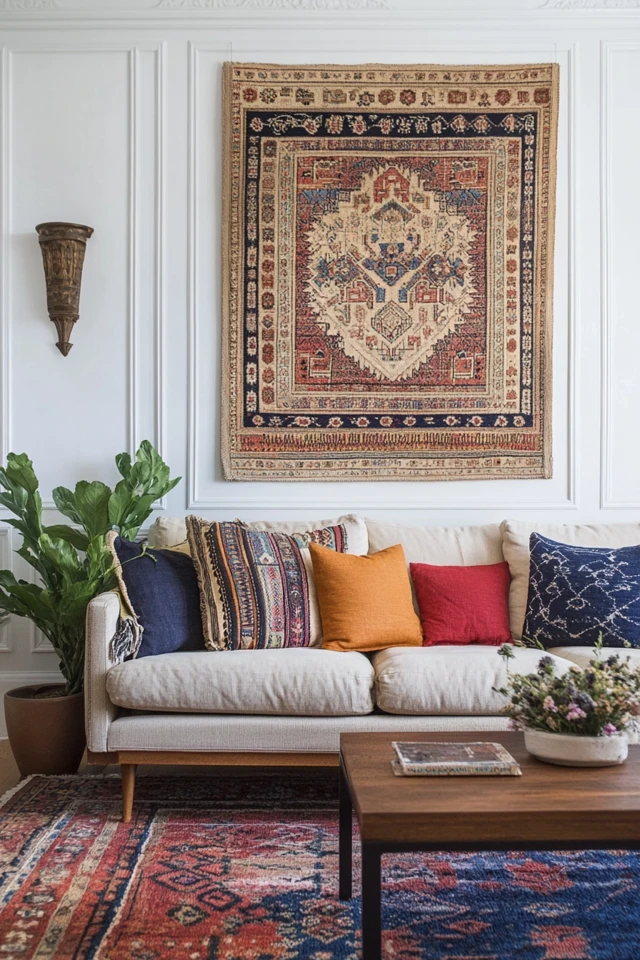Introduction
When it comes to bohemian interior design, rugs are more than just floor coverings—they’re the foundation of the entire look. But here’s where it gets even better: you don’t have to settle for just one. Layering rugs is a hallmark of boho style, creating texture, warmth, and an effortless “collected over time” vibe that’s central to this aesthetic. I’ll never forget the first time I layered rugs in my living room. I started with a neutral jute rug as a base and added a bold, patterned kilim on top. Suddenly, the room felt rich, cozy, and full of personality—it was like magic!
Layering rugs is an art form that combines texture, color, and pattern to create visual interest and a sense of depth in your space. The best part? There’s no right or wrong way to do it. Whether you want to create a statement in your living room or add cozy layers to your bedroom, rug layering offers endless possibilities to elevate your boho design.
In this blog, I’ll guide you through the tips and tricks of layering rugs like a bohemian pro. From choosing the right base rug to mixing patterns and textures, you’ll learn how to master this boho staple and make your space feel layered and inviting.
Why Layer Rugs in a Bohemian Space?
1. Adds Depth and Dimension
Layering rugs creates visual interest and adds a sense of richness to your space.
2. Defines Zones
In open-concept spaces, layered rugs help define areas like seating zones or dining spaces.
3. Increases Comfort
Double up on softness underfoot by layering plush or textured rugs.
4. Showcases Your Style
Mixing and matching rugs lets you combine patterns, textures, and colors that reflect your personality.
Step 1: Choose a Base Rug
Why It Matters
The base rug acts as the foundation for your layered look, so it should be large enough to anchor the space and neutral enough to complement the top rug(s).
Best Base Rugs:
- Jute or Sisal Rugs: Their natural texture makes them perfect for a boho base.
- Solid Neutral Rugs: Choose colors like beige, cream, or gray for versatility.
- Flatwoven Rugs: These provide a smooth surface for layering without adding too much bulk.
Pro Tip:
The base rug should extend beyond the edges of your furniture to ground the space.
Step 2: Pick a Top Rug
Why It Matters
The top rug is your chance to make a statement with bold patterns, rich colors, or interesting textures.
Best Top Rugs:
- Kilim Rugs: Known for their intricate patterns and vibrant colors, they’re a boho favorite.
- Persian Rugs: Add a touch of elegance and timeless appeal.
- Shag Rugs: A plush, textured option that adds softness and warmth.
- Animal Hides: Perfect for adding an organic, free-spirited touch.
Pro Tip:
Choose a top rug that’s smaller than the base rug to let the layers show.
Step 3: Mix Textures
Why It Matters
Texture is a key element of boho design, and layering rugs is the perfect opportunity to mix materials for a rich, tactile look.
Texture Combinations:
- Pair a flatwoven jute base rug with a soft wool or shag rug on top.
- Layer a patterned kilim over a neutral, textured base.
- Use a cowhide rug on top of a woven seagrass rug for contrast.
Pro Tip:
Avoid layering two thick rugs to prevent the space from feeling too heavy.
Step 4: Play With Patterns
Why It Matters
Patterns bring energy and personality to your bohemian space, and layering rugs lets you mix and match them creatively.
Pattern Mixing Tips:
- Pair a Bold Rug With a Subtle One: For example, layer a patterned kilim over a solid jute base.
- Stick to a Color Palette: Choose rugs with complementary colors to tie the look together.
- Vary the Scale of Patterns: Combine a large-scale pattern on the base rug with a smaller, more intricate pattern on the top rug.
Pro Tip:
If you’re nervous about mixing patterns, start with one bold rug and one solid or textured option.
Step 5: Experiment With Shapes
Why It Matters
Layering rugs of different shapes creates visual interest and helps define areas in your room.
Shape Combinations:
- Layer a round rug on top of a rectangular one to soften the look.
- Add an asymmetrical cowhide rug for an organic, freeform layer.
- Use smaller accent rugs, like runners or mats, as additional layers.
Pro Tip:
Let the top rug’s shape contrast with the base rug for a dynamic look.
Step 6: Use Rug Layering to Define Spaces
Why It Matters
Layering rugs can help delineate zones in open-concept spaces or multi-use rooms.
Ideas for Defining Spaces:
- Use a large base rug to anchor a living room and add a smaller rug under the coffee table for a layered look.
- In a bedroom, layer a runner or small rug at the foot of the bed over a larger area rug.
- Define a reading nook with a cozy shag rug layered over a neutral base.
Pro Tip:
Make sure the layered rugs are proportional to the space you’re defining.
Step 7: Add Rugs to Unexpected Areas
Why It Matters
Layering rugs isn’t just for living rooms and bedrooms—it can elevate smaller or unexpected spaces, too.
Where to Try It:
- Hallways: Layer a colorful runner over a longer, neutral rug.
- Kitchens: Place a patterned rug over a washable base rug in front of the sink.
- Entryways: Use a bold accent rug on top of a durable base for style and function.
Pro Tip:
Choose low-maintenance materials like indoor-outdoor rugs for high-traffic areas.
Styling Ideas for Layered Rugs
1. Living Room
- A large jute rug as the base.
- A colorful kilim or Persian rug layered on top.
- Accent with furniture that complements the rug’s color palette.
2. Bedroom
- A solid neutral area rug under the bed.
- A smaller, textured or patterned rug at the foot of the bed.
- Add a soft sheepskin rug as an accent near a chair or nightstand.
3. Reading Nook
- A round, plush rug as the top layer.
- A rectangular, flatwoven rug as the base.
- Pair with a cozy chair and a woven basket for storage.
Picture Gallery
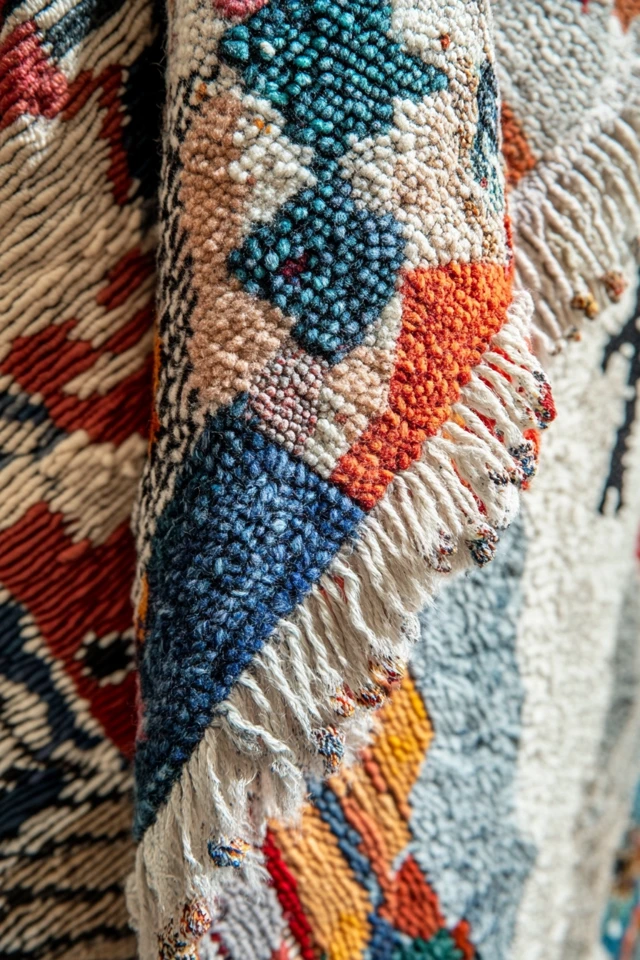
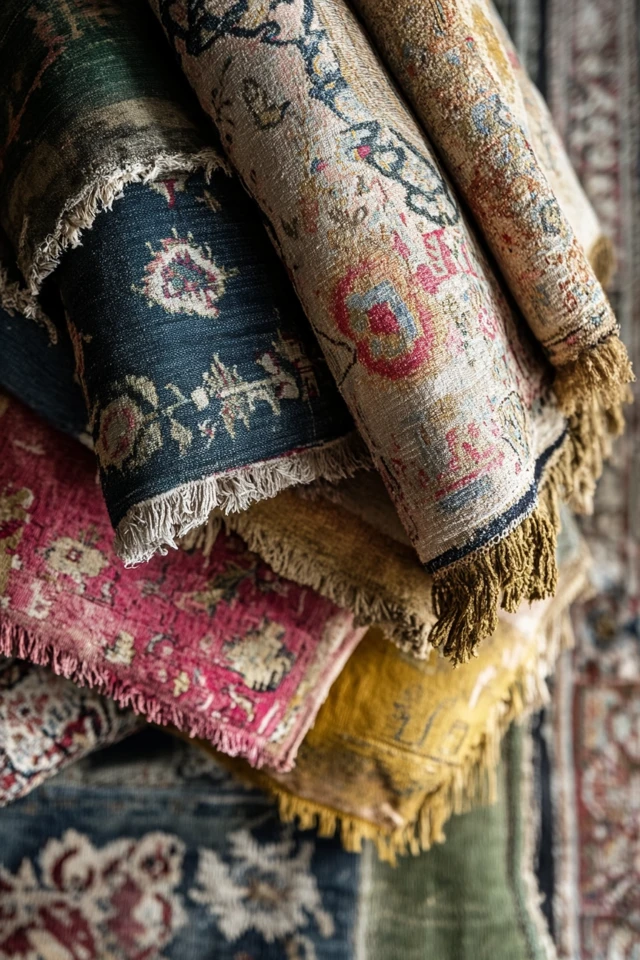
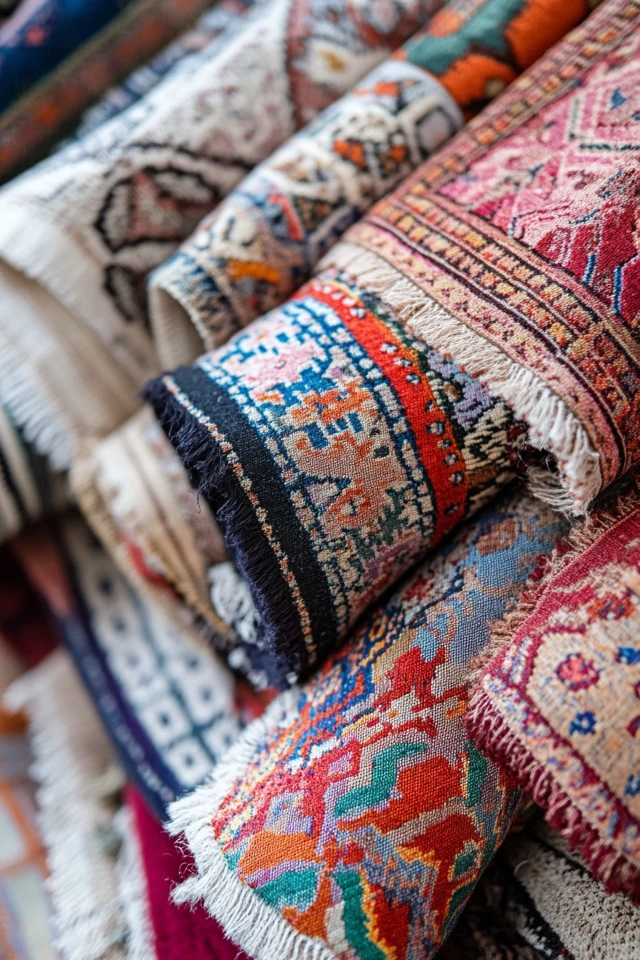
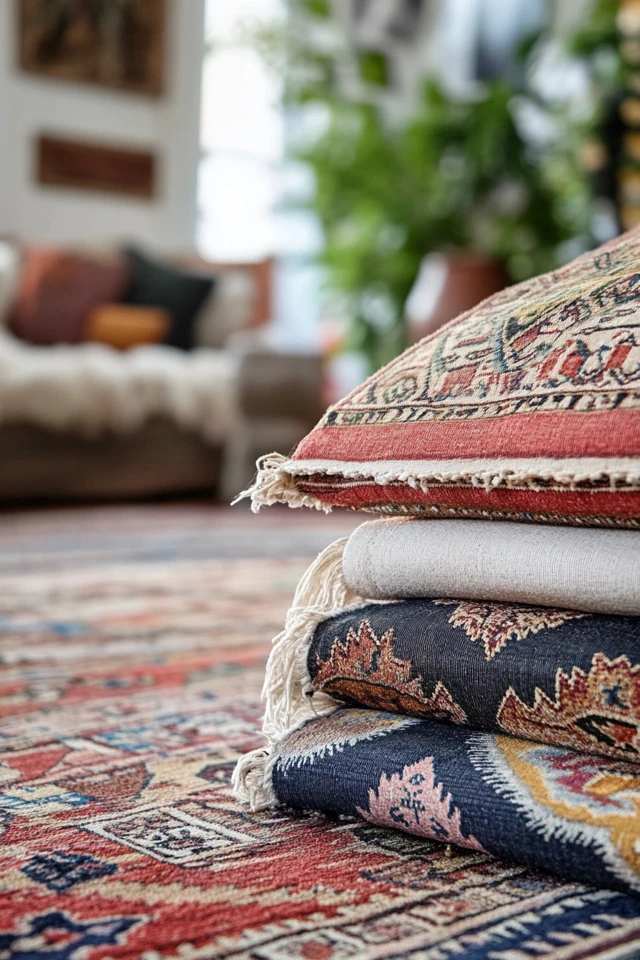
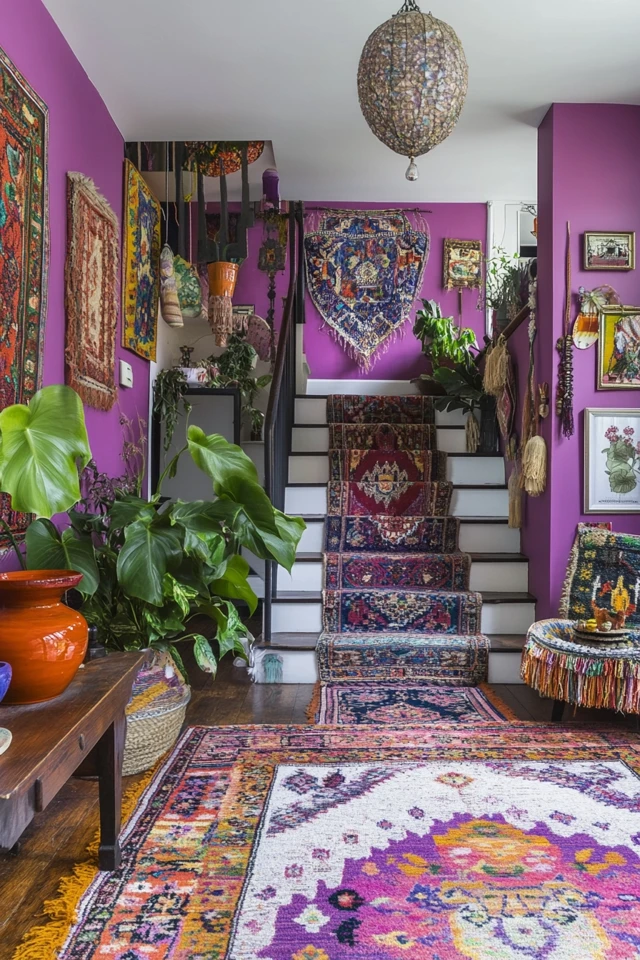
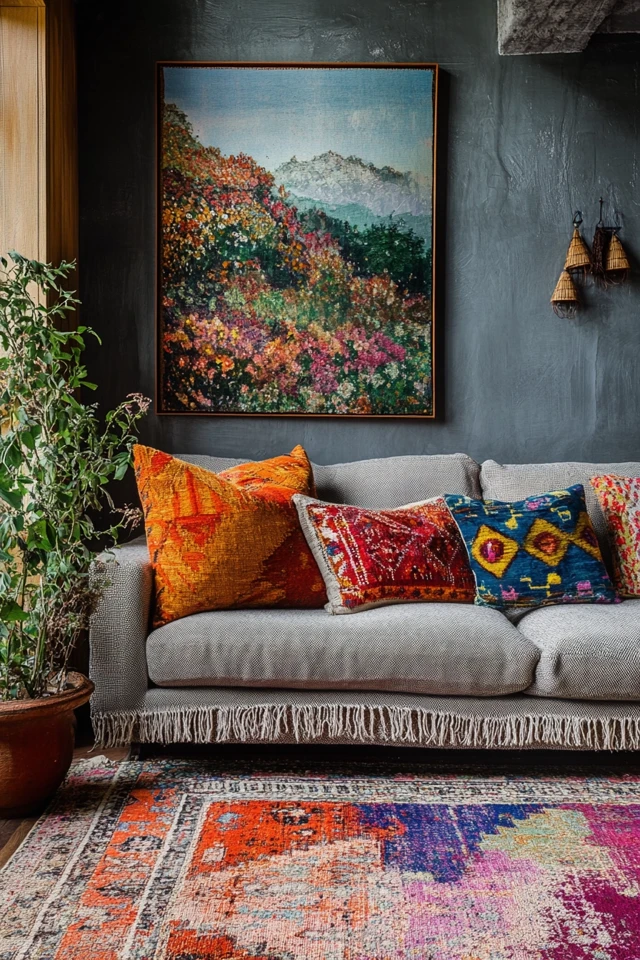
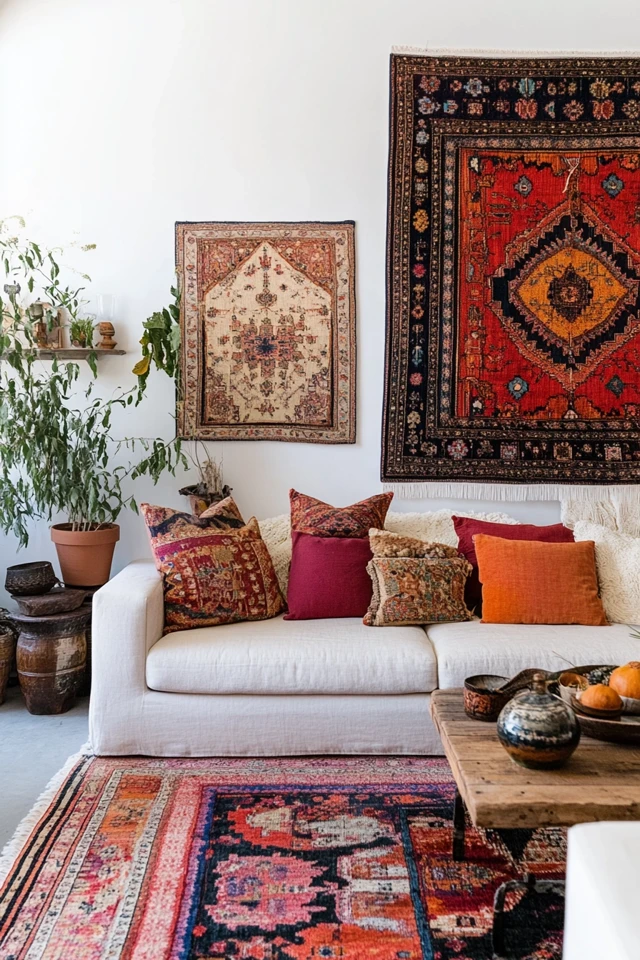
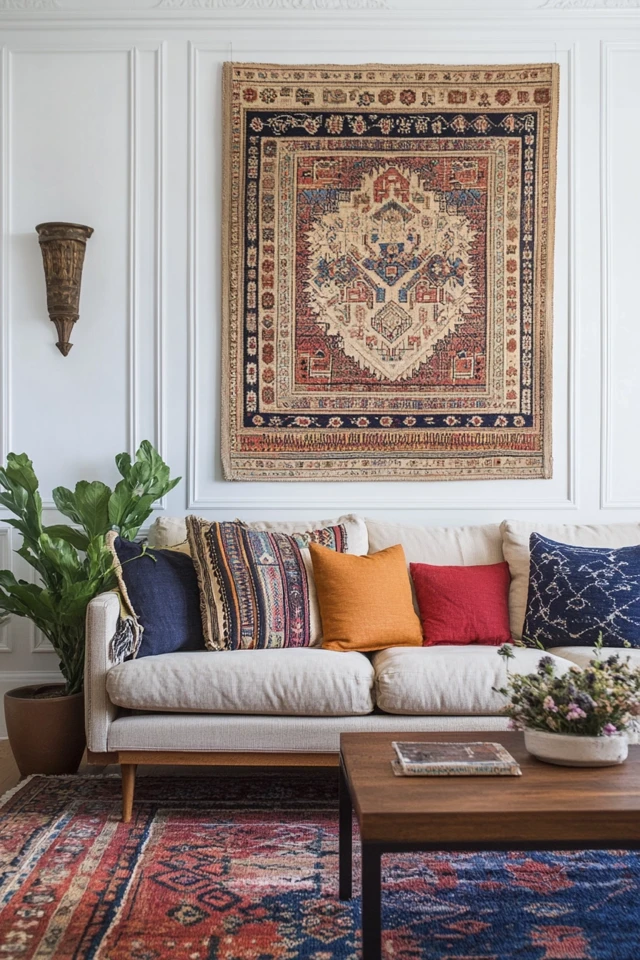
Conclusion
Layering rugs is one of the easiest and most impactful ways to bring depth, texture, and personality to a bohemian space. Whether you’re working with bold patterns, soft textures, or neutral tones, the key is to experiment and have fun. For me, layering rugs has become a go-to trick for transforming any room into a cozy, inviting sanctuary.
So grab a few rugs, play around with different combinations, and watch as your space comes alive with warmth and character. With these tips, you’ll be layering rugs like a bohemian pro in no time!
FAQ
1. Can I layer rugs in a small room?
Yes! Use smaller rugs to avoid overwhelming the space, and opt for lighter colors to keep the room feeling open.
2. What materials are best for layered rugs?
Natural materials like jute, wool, and cotton work beautifully for layering. Mix flatwoven and plush textures for contrast.
3. Can I layer rugs on carpet?
Absolutely! Use rug pads to keep them in place and choose lighter, flatwoven rugs to prevent the layers from feeling too bulky.
4. What colors work best for layered rugs?
Stick to a cohesive color palette that complements your room’s decor. Neutrals with pops of bold colors work well for a balanced look.
5. How do I prevent layered rugs from sliding?
Use rug pads or double-sided carpet tape to keep your rugs secure and prevent movement.

